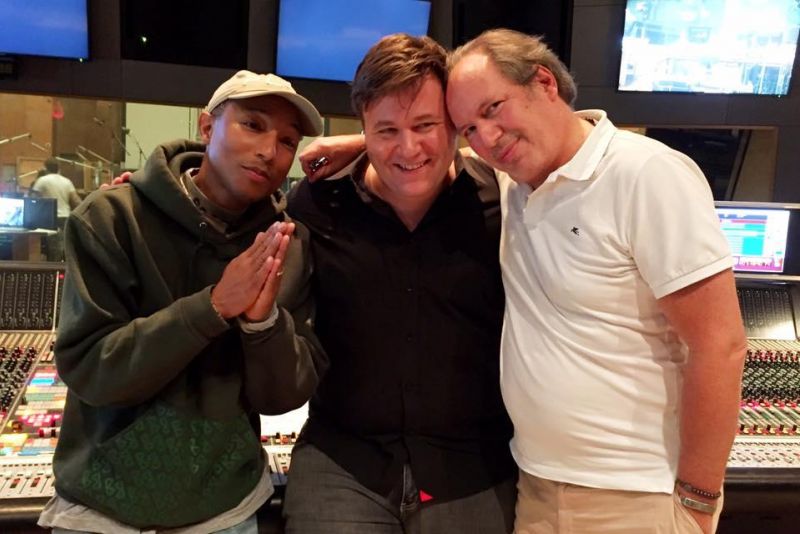
For “Hidden Figures,” the largely unknown story of African-American women working at NASA during the early 1960s, it was already a given that multi-Grammy-winning Pharrell Williams – a producer on the film – would contribute songs. Williams then called Hans Zimmer, with whom he had worked on several films dating back to “Despicable Me.” “I knew that he would have the right playbook,” Williams says. Zimmer in turn recruited English composer Benjamin Wallfisch, who had contributed additional music to Zimmer’s “Batman v. Superman: Dawn Of Justice.”
“An Englishman, a German and an American walk into a bar,” quips Zimmer. “What do they do? They start talking about music.” Williams’ songs came first, says Zimmer. “The score draws from the songs all the time.” Prior to the film, Williams happened to be working on songs that, for no particular reason, seemed to have a 1960s vibe. “When we got the call about this project, all of a sudden it was, now I understand why I’m doing all this early ’60s music.”
Although he wrote “somewhere between six and eight” songs for “Hidden Figures,” two have been entered for Oscar consideration: “Runnin‘” and “I See A Victory.” “Runnin’,” Williams says, was inspired by the scenes of Katherine (Taraji P. Henson) having to dash across the Langley Research Center campus to the only bathroom that a black woman could use. “What must have gone through her mind?” Williams asks. “They lived in a gender-biased, racially biased matrix where the gravity was much heavier on a woman than it was on a man.
So they were pulled down in a different way. But their math, and their ambition, superceded it.” In fact, Williams had met the real Katherine Johnson six years earlier and hadn’t realized it. She was part of a group of veteran NASA employees who visited Williams’ From One Hand To AnOTHER charity back in Virginia; Williams’ mother reminded him when he started work on the film. The gospel-flavored “I See A Victory,” sung by Kim Burrell, is reminiscent of the upbeat anthems Williams heard in church as a boy:
“They would sound so encouraged when their whole world seemed to be crumbling. It was almost as if they knew if they’d gone to the moon and looked at themselves back on Earth, they could see how far they’ve come and how far they’re going to go. And that this is really just a moment in time.” Once Williams came in with the songs, Zimmer had a specific take on the score. “If you think about the movies about NASA or space flight, ‘The Right Stuff’ or ‘Apollo 13,’ it’s white-male-glorious, heroic Americana in the best possible way,” he says. “We didn’t want to take away the achievement of those men, but to add into it an African-American voice.”
The score, which prominently features Burrell and Clydene Jackson as vocal soloists, and choirs from both Dallas (17 Singers) and Los Angeles (12 more), has an undeniable gospel quality. “I have always loved the benevolence of those harmonies,” says Wallfisch. “You feel embraced and uplifted. We spent a lot of time examining those harmonies and trying to infuse them into the main thematic writing.”
There is also a jazzy solo trumpet and some elements that sound electronic but are not. “1961 was pre-Moog synthesizer,” Wallfisch reminds. “It’s actually a guitarist friend of mine. They’re pulsing textures, putting them through several passes of a tape emulator to get it back to the sound of those early reel-to-reel machines, reversing them, layering them. It, and the piano, became the sound of Katherine’s brain.”
Says Zimmer: “This started off with all of us piling into a room and playing together. I had this idea: How do these women think differently about mathematics? They dance about math. The rhythm shouldn’t be straight, it should swing a little. It really was the three of us. People don’t understand that we really do work well as musicians in bands.”
